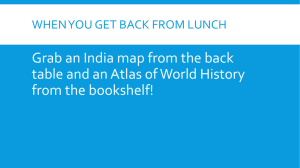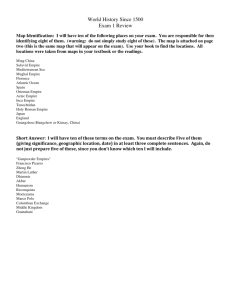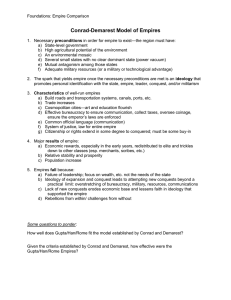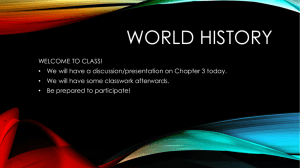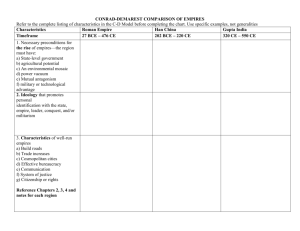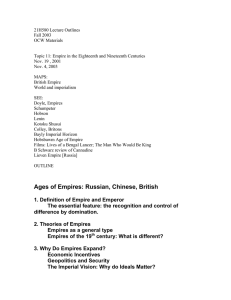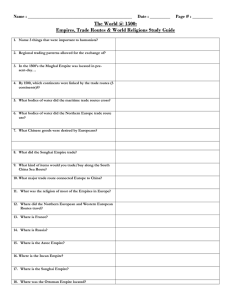Media in a Global Context - Portland State University
advertisement
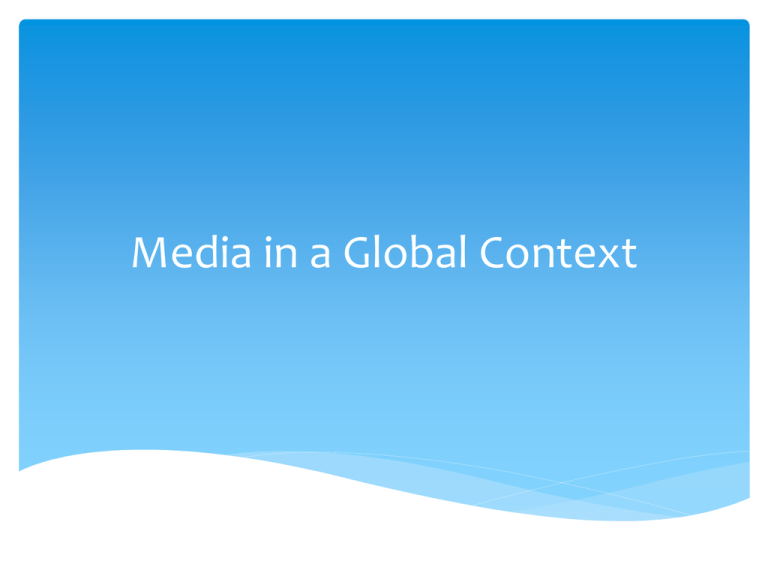
Media in a Global Context Prominent Uses of Communication at Global Level War & Diplomacy Ideological & Cultural Transmission News & Information Entertainment Profit Communication and Empire Integrally linked with history of war and commerce (technological leaps in communication). Extent of empire as indicator of efficiency of communication. Communication and Empire Ancient Empires Asia: India, China Middle East: Persia, Egypt Europe: Greece, Rome Modern Empires Britain (BBC) United States (Voice of America) Counter-Empire New World Information Communication Order Types of Media Systems (Common Categorizations) Authoritarian Western Communist Development Revolutionary Internationalization of Western Concept UN General Assembly Resolution passed at its first session, December 1946: “Freedom of information is a fundamental human right and is the touchstone of all the freedoms to which the United Nations is consecrated.” Western Model: Differing Approaches Within Libertarian Model Lack of government interference Market-driven Social Responsibility Model Media should inform citizenry Government can intervene if media doesn’t fulfill its role Public should have some access to the press Western Model: United States Press freedom in U.S. Minimalist tradition. Constitution restrains government. Right of expression almost absolute. Freedom of press is absence of prior restraint with some accountability after publication. No right of access, guarantees. No official recognition of journalists Western Model: Europe Tradition of government activism and intervention. Press commissions, ombudsmen, oversight boards. Controls on content – advertising, children’s programming, right of reply Problems for Western Model Serving the public good vs. public desires Marketplace Public oversight Government intervention Huxley vs. Orwell Press Freedom Freedom House criteria for freedom of the press: Legal environment Political influences Economic pressures Map of Press Freedom (2014) 197 Countries/Territories 63 (32%) rated “free” 68 (35%) rated “partly free” 66 (33%) rated “not free” Rankings Press Freedom Reporters Without Borders Reports of violations form the basis of criteria Map of Press Freedom (2014) 180 Countries Rankings Recent Global Trends Globalization of the media Rise of moguls Anglo-American dominance Language News Pop culture Culture as basis for conflict Citizen Murdoch Global Media Empire (News Corporation) Vertical Integration TV (Aided by Satellite Technology) Newspapers Magazines Books Movies Live sports plays key role The Sun Never Sets on Rupert Murdoch’s Empire From the 1999 News Corporation Annual Report: “Virtually every minute of the day, in every time zone on the planet, people are watching, reading and interacting with our products. We’re reaching people from the moment they wake up until they fall asleep.” Cultural Conflict Recent Example: Violence in France (January 2015) 12 killed at satirical magazine, “Charlie Hebdo” Had previously been firebombed in November 2011 after running a caricature of the Prophet Muhammad Universality vs. Pluralism
